Here we discuss the rooms and audio-visuals.
We have designed Pods as a collaborative workspace. Teams of four students work at each pod. As can be seen, each Pod consists of a hexagonal table with a rectangular section to the wall. Each Pod has:
The size of the Pod is in part dictated by the 2.2 m Pasco Track (ME-6956) shown in the photograph. The height of the tabletop is 92 cm. This allows students to work while seated or standing, and is also a good height for the Learning Assistants to lean on while discussing with the students. Two of our Pods are on hydraulic lifts, so may be lowered for students in wheelcharis. |
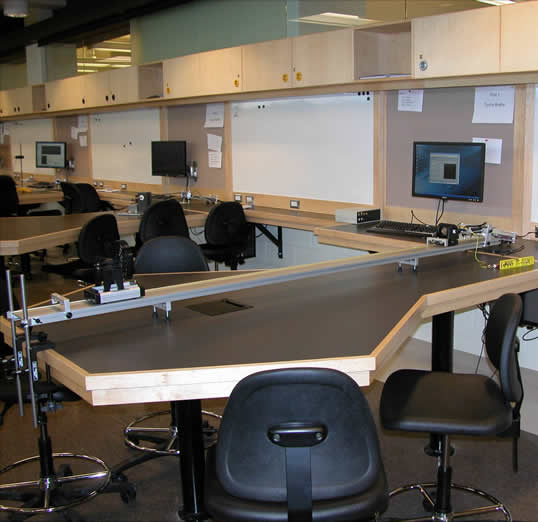 |
Among the design constraints is that the Practicals must be neutral in terms of Learning Assistant resources compared to the old laboratory/tutorial structure. This dictated that we have nine Pods in each room. We think that given sufficient resources, eight Pods per room is the ideal number.
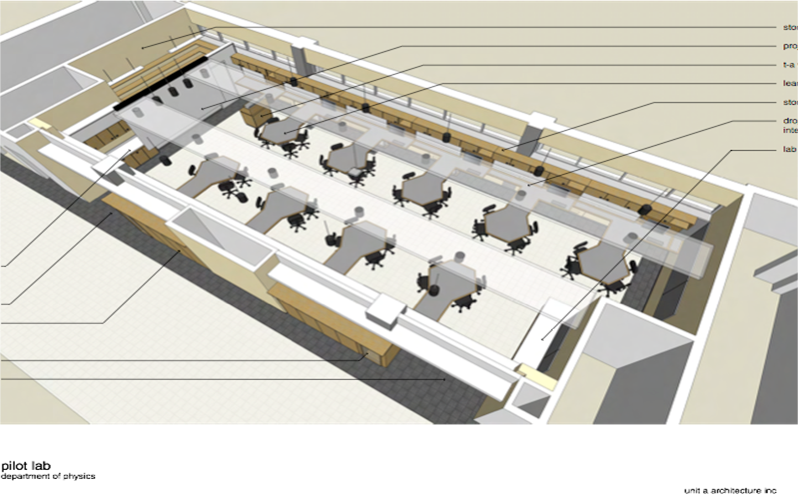 |
In addition to the Pods, each room has:
We worked very closely with our architects to control sound levels. When in operation the room sounds like a busy restaurant: conversations between students at a Pod are easy but there is an underlying buzz.
We also worked very hard on lighting with multiple controls.
We have been learning that the design of the Practicals Rooms is vital in achieving the types of learning that we desire. Here is an analogy.
You are hungry, and go into a restaurant. How do you get something to eat? If the restaurant looks like the one to the right the architecture tells you that to get something to eat you:
Note that we get this message even it we don't know the language. |
 |
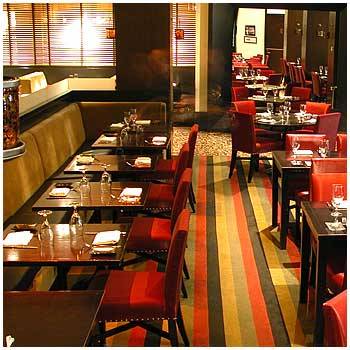 |
If instead, when you go into the restaurant and see something like shown to the left, the architecture tells you that to get something to eat you:
|
You may have experienced going into a restaurant where the architecture sends mixed signals. This is particularly common for ethnic restaurants.
Now imagine that you want to learn. You walk into a room that looks like the one to the right. The architecture tells you to:
Even if the seats can be moved (often they can't) in such a room getting small group discussion to happen is difficult if not impossible: the room has already sent the students the message. |
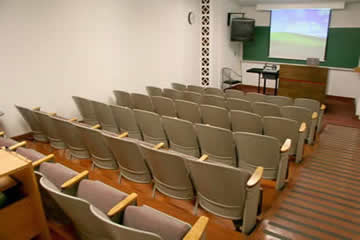 |
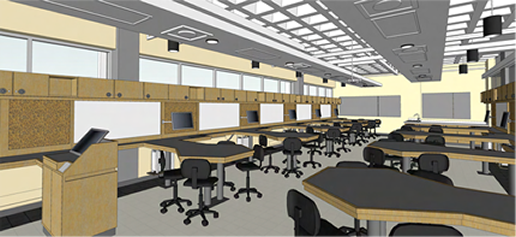 |
But if you walk into the room to the left, the message is:
Small group discussion is natural and automatic. |
The audio-visuals are extremely important. Through some trial and error we have found some things that work well for us.
As already mentioned, there is a projector and screen at the front of the room. This is often useful, but there is a problem: if the fonts of what is being projected are not huge the result is often not legible from the back of the room. Thus, we have software that allows what is on any monitor in the room to be broadcast to all the other monitors. Thus if the projector is showing what is on the Learning Assistant's monitor, often that is also broadcast to all the other monitors.
This capabiilty is sometimes used in another way. Part of many sessions involves student Teams working on a problem that has been set by the Instructors. Often they do this work on their whiteboard. If a Team has done a good job on the problem, we wish them to explain to the rest of the students how they did it. The students can direct their web cam onto the whiteboard, which we can then broadcast to all the other monitors.
We have a hand-held wireless microphone in each room. These are often used by a Team when they are explaining to their classmates how they solved a problem. This microphone turns out to be useful for many forms of group discussion. Sometimes the Learning Assistants are playing "Phil Donohue".
There is also a microphone fixed on the Learning Assistant station.
As mentioned, part of every session usually includes a question and answer session. When students do not bring up questions, we present them with problems to work on. Often we put these in multiple-choice format, and our software allows us to put the questions and answers on each Teams' monitor. The students click on their answer, and the Learning Assistants see who has given what answers. For this, the ability to mute the projector is important so the students don't get tipped off about the right answer.
Finally, the monitor at the Learning Assistant station is a tablet, so that normal handwriting can be used and displayed.
Here is the hardware and software that has been discussed: